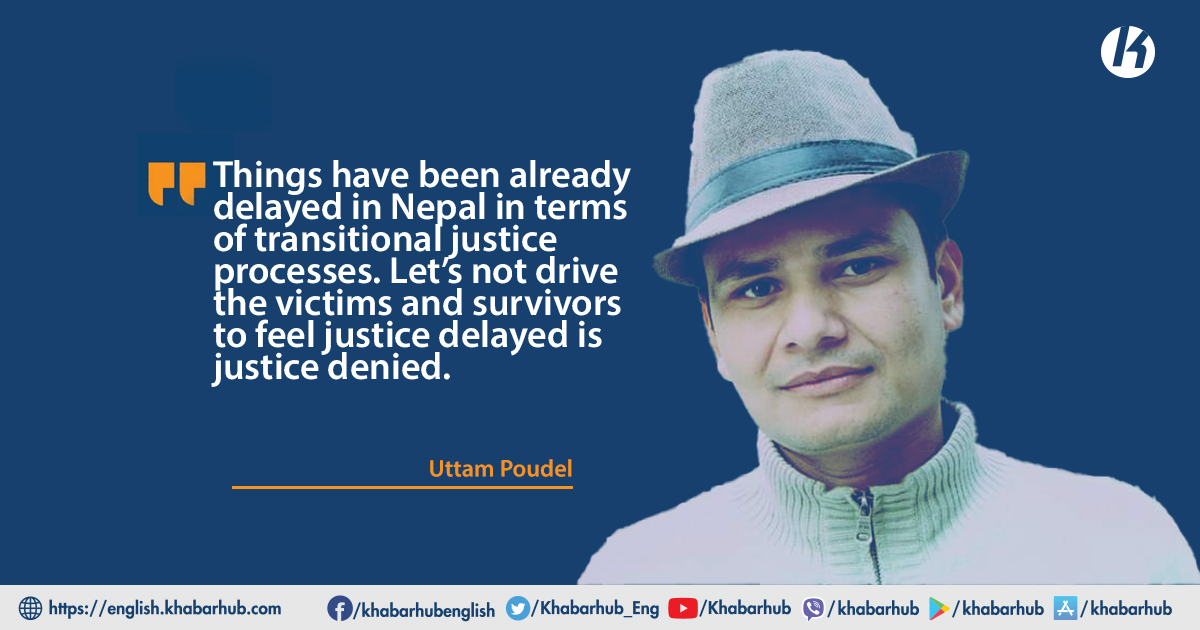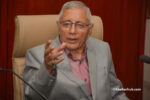The much-awaited Truth and Reconciliation Commission (TRC) and the Commission of Investigation on Enforced Disappeared Persons (CIEDP) were formed in 2014 after eight years of the Comprehensive Peace Accord between the Nepal Government and the then Communist Party of Nepal (Maoist).
However, these two transitional justice mechanisms came into operational form a year later in 2015.
So far, these bodies should have executed their objectives by bringing both the victims and perpetrators of decade-long Maoist Insurgency (1996-2006), which according to the Informal Sector Service Centre (INSEC), one of the top human rights organizations in Nepal, resulted into the death of 13,000 people and 1,300 missing, together into a single platform so that they could know each other and start rethinking to transform society after political violence.
After a long slumber, they have been the subjects of discussion in Nepali politics now again. It is a matter of great irony that these mechanisms have done nothing remarkable, except receiving complaints forms from the victims.
Even Section 26 of the TRC Act remained doubt-ridden. For it states that the commissions can recommend amnesty for people involved in human rights violation cases except for rape.
Families of victimized and traumatized ones suspect that this clause may drive the commissions to give amnesty to perpetrators.
Nepal can follow either the South African model or the distinct model of its own under the tutelage of experts in conflict management, mental health and psychotherapy.
The Supreme Court has already directed the government to amend the controversial section. People still harbor doubt about whether these justice bodies will come into full-fledged operation or not.
The victims are also demanding to ensure them with credible bodies, and some of them are rallying cry for the
reformation of powerful and credible bodies aside from the existing ones.
The role of TRC and CIEDP is not only associated with reconciling and rebuilding the society damaged by past violence and violation but also with the psychology and mental health of the victims.
It is only through the healing process of the traumatized subjects of insurgency, that the road to human rights promotion is built. But the state rather seems to be apathetic to the urgency of the operation of the aforementioned two transitional justice bodies in order to stop the possibility of counter-violence and human rights abuse.
To start truth-telling and justice-giving by the effective execution of TRC and CIEDP is an immediate task of the state at present.
James Dawes, a contemporary American writer and winner of the International Human Rights Book Award, in his book Evil Men (2013) gives a great premium on storytelling for human rights to work.
Traumatized and victims of violence of extreme kinds can be brought back to normalcy not only by supplying food, medicine, weapons; or money but by asking questions, and listening to their stories, and finally healing their trauma caused by past violence.
The concerned ones (victims of insurgency in Nepal) have got different forms of material compensation from the subsequent governments during the post-conflict periods.
The million-dollar question, however, is that are they helping to cure their traumas and psychic deviations. The
the answer, of course, is not “completely”.
It is because aside from so-called material compensations, the act of storytelling is not only important as an instrument in the field of human rights but is equally valuable to the psychic therapy of the people victimized by conflicts and violence.
For this, the transitional justice vehicles are to begin the hearing process without much delay. The State is expected to assimilate and internalize the following ideas and act accordingly.
Establishing Credibility of the Mechanisms
The foremost job of the State is to activate the mechanisms and make them performative deputizing the experts without any political and ideological inclination. This will help establish credibility among the concerned.
The mechanisms then should start investigating the cases on the basis of the documents submitted so far by the victims, and it is also a good idea to register other complaints left out, if any. The more complaints are registered, the more the mechanisms get credibility from the public.
The transitional justice bodies should abide by the principle that no case of past violence will be left behind. The commissions often are found to be grudged by the government due to a lack of budget.
The government, therefore, is expected to have the timely allocation of the budget for the full-fledged functioning of the mechanisms.
Physic Impact of Political Violence
A decade-long Maoist Insurgency in Nepal not only resulted in physical damage caused by death and destruction on a massive scale but also brought in psychic and emotional damage among survivors and victims of atrocities reducing them into traumatized subjects.
Epidemiological research shows that survivors and victims of past violence undergo Post-Traumatic Stress
Disorder (PTSD) — fear, nightmares, feelings of helplessness and haplessness, depression, relationship difficulties, anxieties, feelings of ex-communication in the same community, and a host of other mental and emotional ailments.
It is, therefore, crucial to involve psychologists and mental health workers in TRC and CIEDP hearing processes. To rebuild the society damaged by violence and violation, and promote human rights, both mechanisms should strive to heal the psychic and emotional wounds of the traumatized ones.
South African TRC Model
South Africa’s apartheid regime officially came to an end after the first elections on 27 April 1994 that introduced democracy in South Africa.
One of the main tasks of the commission was to unveil the truth about past gross violations of human rights. It was believed that this task would be of utmost importance for the promotion of reconciliation and national unity.
Approximately four and half decades of the apartheid regime (1948 to 1994) had been so horrendous and precarious to millions of people that they lost their lives due to State-sponsored violence and the activities carried out by a host of liberation forces.
To rebuild and reconcile the society ravaged by brutalities of the past, TRC was formed and it started working from 1995 until 2003. Through TRC, perpetrators and victims of the apartheid regime started to listen to and understand each other.
During the hearing processes of TRC, discursive practices such as giving testimonies, lamenting, complaining, apologizing, giving vent to one’s rage, and expressing one’s grief, disappointment, and pent-up emotions were executed.
TRC, in fact, was a harmonizing process among the stakeholders of the past conflict to establish human rights, democracy and equality.
One of the main tasks of the commission was to unveil the truth about past gross violations of human rights. It was believed that this task would be of utmost importance for the promotion of reconciliation and national unity.
TRC was accompanied by three subcommittees: Human Rights Violations Committee, the Amnesty Committee and the Committee on Reparation and Rehabilitation. However, the commission had retained a permanent Investigation Unit as an integral module.
Things are already delayed in Nepal for transitional justice processes. Let’s not drive the victims and survivors to feel justice delayed is justice denied.
Now, South African TRC has been the subject of discussion, citation and reflection among researchers, journalists, academics and human rights activists across the globe because of its expected results to a large extent.
Expectations from Nepal in the Post-conflict Era
Nepal can follow either the South African model or the distinct model of its own under the tutelage of experts in conflict management, mental health and psychotherapy.
TRC and CIEDP as transitional justice mechanisms are matters of great concern for the stakeholders both at home and beyond. They are expected to come into action in rapid succession for redressing and reconciling the disintegrated Nepali society due to atrocities wreaked during the insurgency.
The State should be serious regarding the execution of these mechanisms with its full support so that they will be
able to work for the well-being of survivors and families of victims at heart.
TRC and CIEDP hearings have preemptive impacts to mitigate inter-generational violence and promote human
rights by enacting truth, justice, reparation and social change.
Hence, without any delay, they should come into action.
Things are already delayed in Nepal for transitional justice processes. Let’s not drive the victims and survivors to feel justice delayed is justice denied.
Let’s not contextualize Nepal as a human-rights-risk-zone.
(Uttam Poudel is Researcher on Traumatic Literature and Human Rights)
(Views expressed in this article are the author’s own and do not necessarily reflect Khabarhub’s editorial stance)









Comment